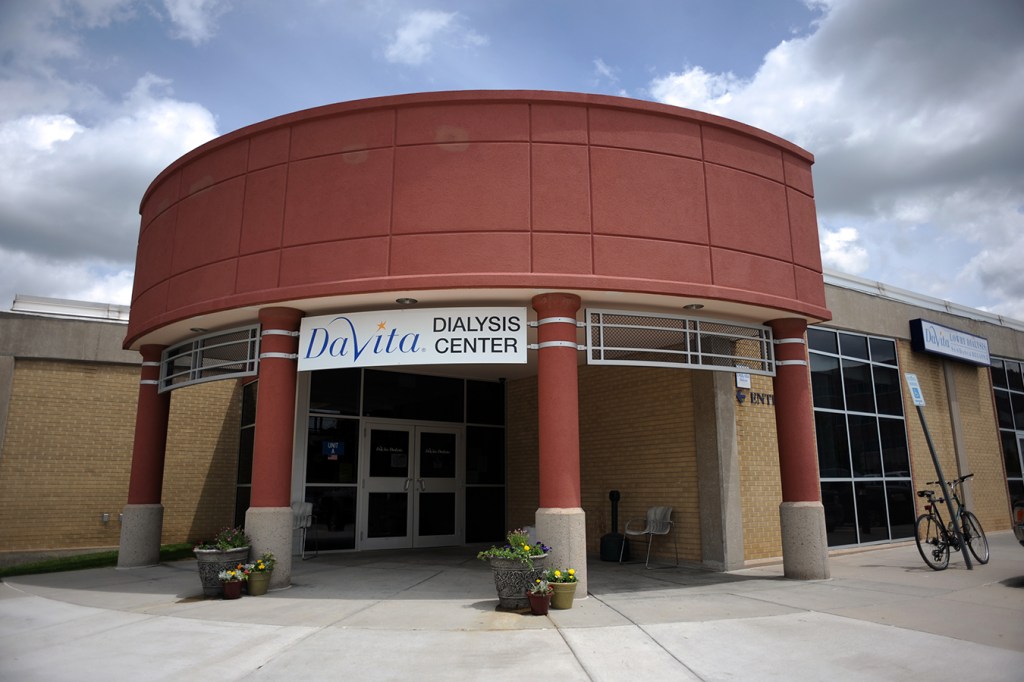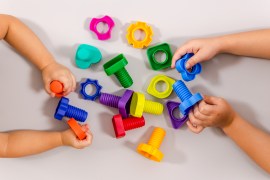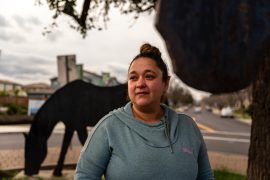Home dialysis for older adults will become more common in the years ahead, experts predict — but not without overcoming significant challenges.
By 2025, the Trump administration wants 80% of people newly diagnosed with kidney failure to receive home dialysis or kidney transplants, according to an executive order issued in July. Currently, more than 85% of such patients are treated at dialysis centers.
In a notable move, retail health giant CVS Health has said it will enter the dialysis business, while the companies that dominate this market — Fresenius Medical Care and DaVita — have confirmed plans to expand their home dialysis offerings.
“We think there’s definitely an opportunity to get more of our patients home,” said Dr. Dinesh Chatoth, associate chief medical officer at Fresenius, which this year bought NxStage Medical, a leading provider of home dialysis technology. (About 12% of Fresenius’ 208,000 U.S. dialysis patients are on home therapies.)
“I think it’s realistic to expect 40% to 50% of patients to be able to do home dialysis,” said Dr. Martin Schreiber, chief medical officer for DaVita home modalities. (About 13% of DaVita’s 203,000 U.S. dialysis patients now receive home therapies.)
Other experts think that’s optimistic. “I think 25% to 30% of patients is more realistic,” said Dr. Thomas Golper, a professor of medicine at Vanderbilt University, whose home dialysis program is among the largest in country.
Home dialysis has several advantages over dialysis in treatment centers: Patients can get therapy more frequently, which puts less stress on their bodies; it’s more convenient; it’s less expensive; and patients’ quality of life is generally better, according to numerous studies. On the downside, doing this therapy at home can be isolating, fraught with anxiety, technologically challenging and burdensome for patients and caregivers.
What changes are needed to bring home dialysis to more patients — especially older adults, the fastest-growing group of patients with serious, irreversible kidney disease? We asked nephrologists, patient advocates and dialysis company officials for their thoughts.
Better patient education. Medicare pays for “pre-dialysis education” that informs patients about treatment options before their kidneys fail. Yet, fewer than 2% of Medicare members with advanced kidney disease receive this benefit, according to a U.S. Government Accountability Office report.
“We need to improve the education of patients regarding their [dialysis] modality choices,” said Schreiber of DaVita. Patients who attend that company’s Kidney Smart education classes are six times more likely to select home dialysis as a treatment option, according to materials supplied by DaVita.
Ongoing education about how to handle issues that arise during home dialysis is also needed. In a recent survey of caregivers providing complex care at home, 60% of caregivers assisting with home dialysis said they needed “more/better instruction” while 18% called for “more help from others.”
“Right now, patients are educated on the mechanics of the treatment,” said Nieltje Gedney, treasurer of Home Dialyzors United, a patient group that has been testing an education curriculum. “But in order to be successful at home, patients also have to learn much more about how to manage their treatment.”
More personal assistance. In Canada, Australia and other countries where home dialysis is much more common than in the U.S., patients can get assistance from health workers who help them set up for a dialysis treatment and wind things down when treatment is over. On each end, tasks required can take half an hour or longer.
Medicare doesn’t pay for this kind of assistance, but it should — especially for older adults, several experts suggest.
“Imagine trying to move someone 75 or older who’s socioeconomically disadvantaged onto home dialysis,” said Dr. Holly Mattix-Kramer, president of the National Kidney Foundation and a professor of medicine at Loyola University Medical Center in Chicago. “Maybe they feel insecure and kind of afraid. Maybe they need some extra time going over skills. Maybe they need some extra support the first few months before they feel comfortable with the routine.”
Home health aides or community health workers could provide help of this kind. Dori Schatell, executive director of the Medical Education Institute, which specializes in serving people with kidney disease, called for a demonstration project of paid home dialysis helpers.
“Assisted dialysis in the home would have tremendous advantages, I believe, especially for the elderly,” Schreiber said, and DaVita has been talking to the Centers for Medicare & Medicaid Services about how this might work.
New technologies. In the next several years, Chatoth of Fresenius envisions that new technologies will allow people on home dialysis to be monitored much more closely, day by day. Two-way portals would allow data to flow back and forth between patients and clinicians. Telehealth would allow physicians, nurses, social workers and dietitians to interact with patients remotely and provide more ongoing support.
This kind of connectivity is especially important for older adults with multiple medical conditions who need extra oversight and may have difficulty traveling to a dialysis center.
Fresenius is doing a telehealth pilot, and “we think by the end of the year we should have this rolled out across most of our [home dialysis] programs,” Chatoth said.
Dr. Eric Wallace, an associate professor of nephrology at the University of Alabama at Birmingham and a pioneer in the use of telehealth for home dialysis, thinks telehealth has considerable potential but voiced concerns.
For instance, poor patients and patients in rural areas often don’t have enough internet bandwidth to support videoconferencing. While physicians rely on laboratory tests to evaluate dialysis patients, “there aren’t mechanisms in place to do labs inside a patient’s home,” Wallace said. And some older patients may become even more isolated without regular face-to-face visits to medical providers.
“Telehealth is going to open up new ways to connect with patients,” he said. “But I don’t think it’s quite as easy as people want to make it sound.”
Also, several companies are developing technologies that could make home dialysis safer and easier, including NxStage, CVS, Outset Medical of San Jose, Calif., Quanta Dialysis Technologies of the United Kingdom, and Physidia, out of France.
“They each have their own specific angle, but the general theme with all of them is the ‘Apple-fication’ of dialysis machines,” said Dr. Frank Liu, director of home hemodialysis at the Rogosin Institute in New York City.
Altering physician practices. A precondition for change is educating physicians about home dialysis and persuading them to offer it to more patients, experts suggest.
Only one-third of patients who need to start dialysis are told peritoneal dialysis at home is an option, while only 12% are offered home hemodialysis, research has shown.
Dr. Matthew Rivara, a nephrologist and investigator at the University of Washington Kidney Research Institute, faults “inadequate training in home dialysis” in nephrology fellowship programs, as do several other leading nephrologists.
“There’s almost nothing on board examinations that tests physicians’ knowledge about home dialysis; nephrologists can pass with flying colors and know very little about these therapies,” said Golper of Vanderbilt who’s helped launch a training program for physicians, Home Dialysis University.
Easing transitions. When patients learn they have potentially fatal kidney disease, “you’re literally blinded with fear. There’s no way you can think about your options until you get past that,” said Gedney of Shepherdstown, W.Va., who has relied on home hemodialysis since 2014.
Transitional programs that help people adjust to the need for dialysis and understand what it entails should become more widely available, she said.
Fresenius has nearly 40 programs of this kind across the U.S., and more are starting up. Over four to six weeks, people start receiving dialysis at a center and learn about specifics such as what they can eat, who’s going to pay for dialysis, how their lives might change and how much support they’ll need.
The goal is to help patients “cope with the diagnosis,” Chatoth said. After going through transitional programs, he added, more than half of patients choose home dialysis.







